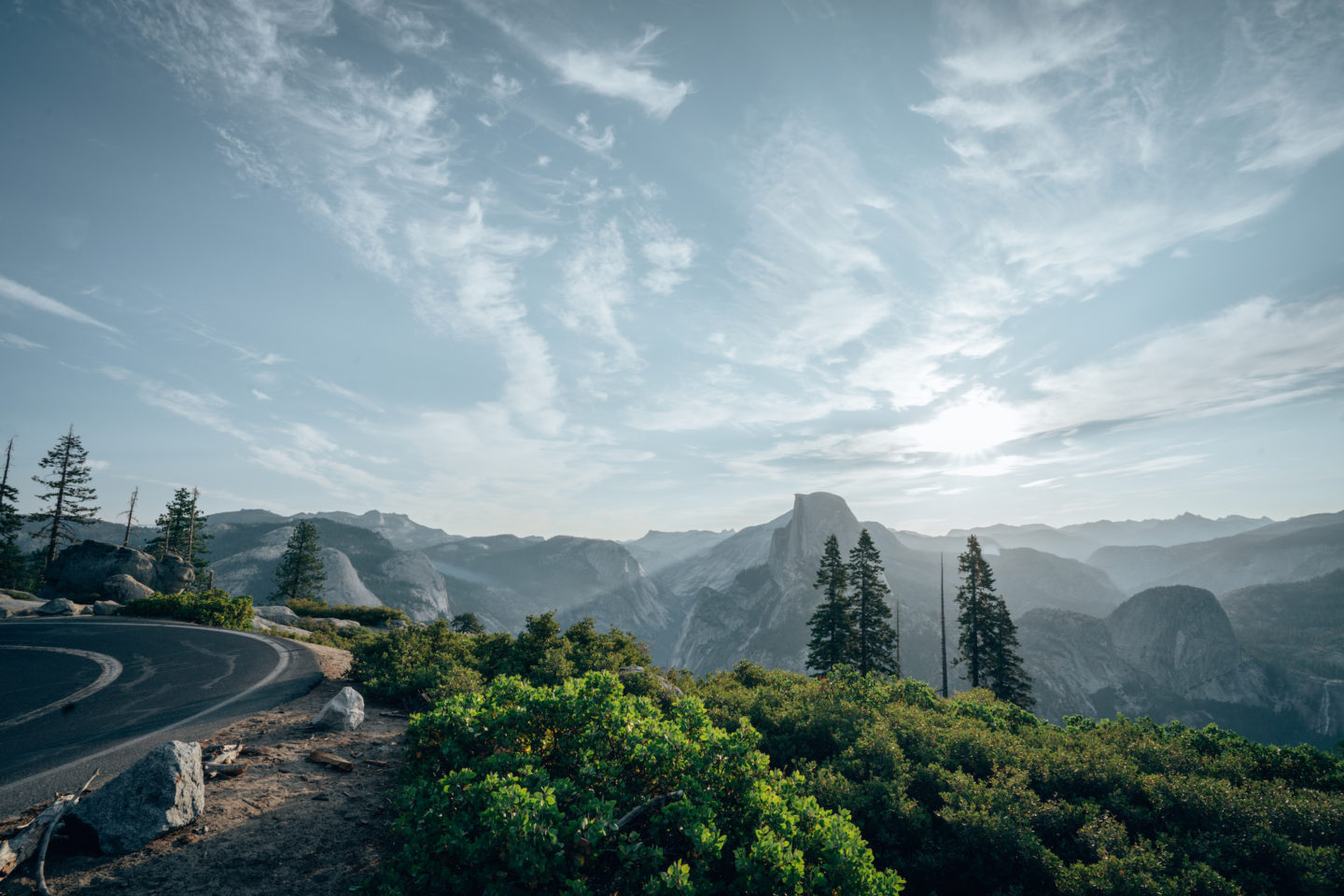
When looking at U.S. National Parks, Yosemite National Park California is in the top 20 when it comes to sheer size, and top 10 for annual visitors. So it’s probably no surprise that there is A LOT that you can do in one of the most popular National Parks in the U.S. So much so, that unless you plan on spending a month there, you’ll likely have to pick and choose your activities. We’d like to help simplify the list, and make it easier for you to determine what you might want to do. So here’s your guide to everything Yosemite National Park in California!
- ABOUT YOSEMITE NATIONAL PARK
- WHERE IS YOSEMITE NATIONAL PARK LOCATED?
- ENTRY TO YOSEMITE NATIONAL PARK
- YOSEMITE NATIONAL PARK ENTRANCES
- WHERE TO STAY IN YOSEMITE NATIONAL PARK
- WHERE TO STAY OUTSIDE OF YOSEMITE NATIONAL PARK
- THINGS TO DO IN YOSEMITE NATIONAL PARK
- BEST TIME TO VISIT YOSEMITE NATIONAL PARK
- HOW MUCH TIME IS NEEDED
- OTHER THINGS TO CONSIDER
- MAP OF CALIFORNIA
- ULTIMATE GUIDE TO YOSEMITE NATIONAL PARK CALIFORNIA
ABOUT YOSEMITE NATIONAL PARK
Yosemite National Park is a UNESCO World Heritage Site known for granite cliffs, waterfalls, giant sequoias, and diverse ecosystems. Located in California’s Sierra Nevada mountains, it covers 1,200 square miles of wilderness. Visitors enjoy activities like hiking, rock climbing, camping, and photography year-round. Iconic landmarks include El Capitan, Half Dome, and Yosemite Falls. The park features over 750 miles of trails and 13 campgrounds. Yosemite’s elevations range from 2,000 to 13,114 feet, offering stunning views. Wildlife includes black bears, mule deer, bobcats, and over 400 bird species. Gateway towns provide lodging and access points to the park.
WHERE IS YOSEMITE NATIONAL PARK LOCATED?
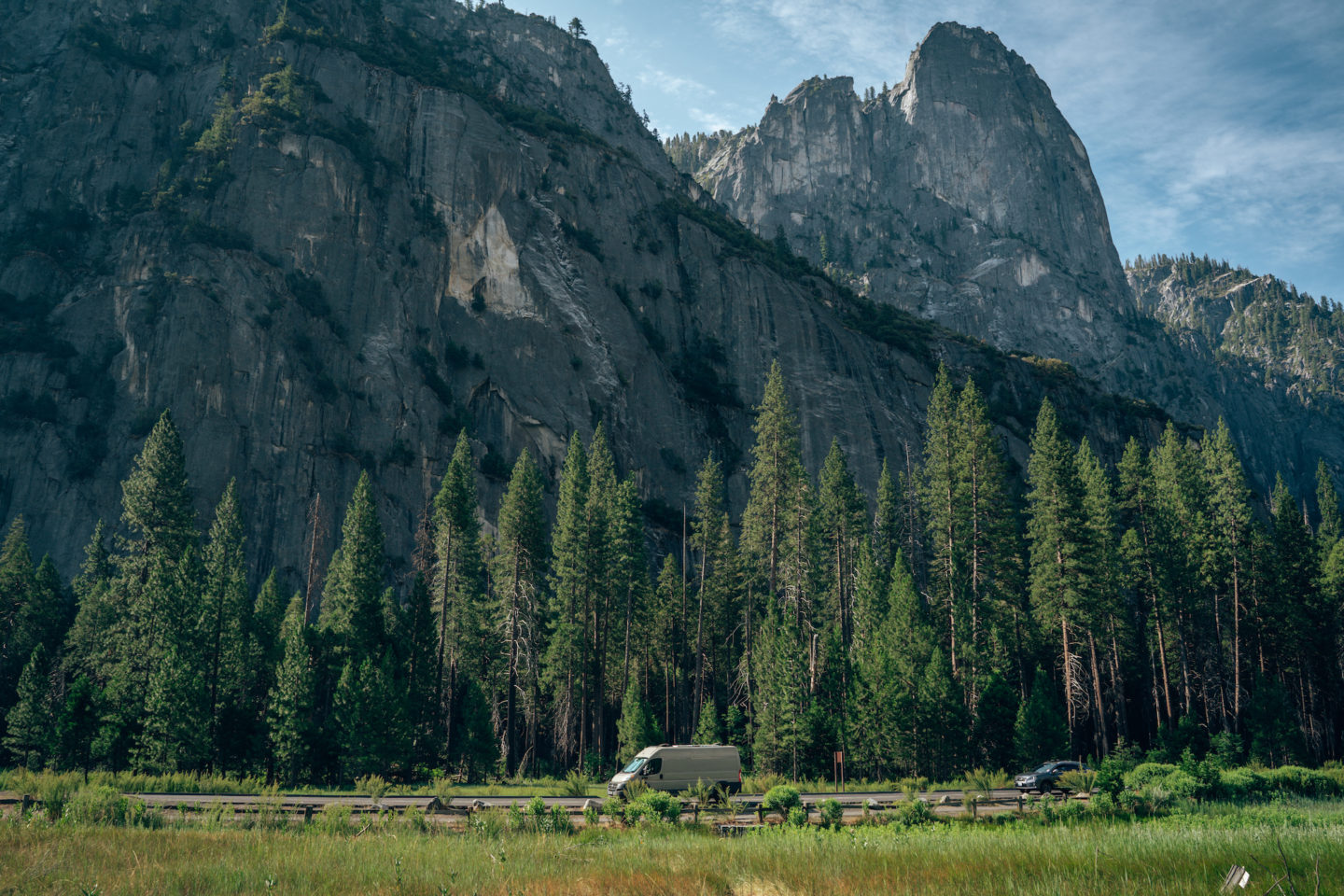
Yosemite National Park is located in the Sierra Nevada mountains of California, about 140 miles east of San Francisco. It spans parts of Tuolumne, Mariposa, and Madera counties, covering 1,200 square miles. The park is accessible via Highway 120, Highway 140, and Highway 41, with entrances in various directions. Renowned for granite cliffs, waterfalls, and giant sequoias, Yosemite draws visitors year-round. It’s near small gateway towns like Mariposa, Groveland, and Oakhurst, offering lodging and amenities. The park’s elevations range from 2,000 feet to over 13,000 feet.
DRIVE FROM:
- SAN FRANCISCO: 4 hours
- SAN JOSE: 4 hours
- SACRAMENTO: 4 hours
- OAKLAND: 3.5 hours
- LAKE TAHOE: 6 hours
- LOS ANGELES: 6 hours
- SAN DIEGO: 8 hours
MAP OF YOSEMITE
Check out our California map below to not only see exactly where Yosemite National Park, California and these activities are located, but over 500 other points of interest in California as well!
ENTRY TO YOSEMITE NATIONAL PARK
Yosemite is 1 of 5 National Parks in the U.S. that requires reservations just to enter the park during their peak season. And this applies even if you have the America The Beautiful Annual National Park Pass, or the Yosemite National Park Annual Pass. These reservations are there to restrict or limit the amount of people who enter the park each day. And while this can be quite annoying and frustrating, trust us when we say it is needed. Even with these reservations, the park gets VERY VERY crowded by mid-day. And some of the trails become quite unsafe due to the amount of people on them.
YOSEMITE NATIONAL PARK ENTRANCES
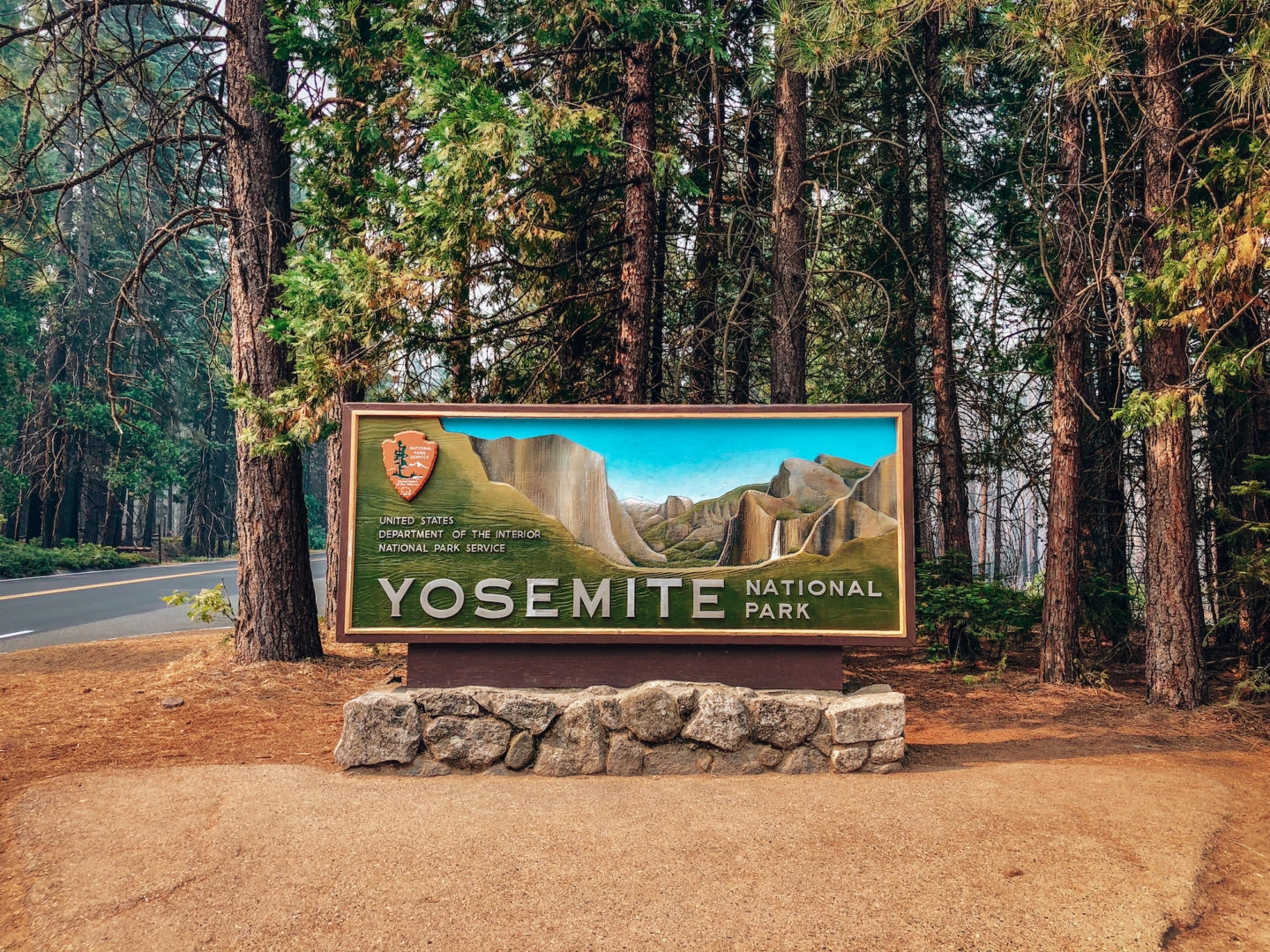
If you plan on visiting Yosemite National Park, our recommendation would be to either stay in the park, or stay in a neighboring city like Oakhurst, Groveland, or Mariposa. There are 5 entrances in to the park, which gives you a fair amount of flexibility in determining where you want to stay. Big Oak Flat is one of the most popular, as it has the main Yosemite National Park sign, is one of the more central entrances, and is located on one of the larger highways. But that means it can get really congested. We’d recommend using any of the other entrances if you aren’t too worried about getting a picture with the sign.
If you aren’t 100% sure when you plan to visit, or want to have flexibility, there are still options. One is to enter the park before 6:00am, or after 4:00pm. Doing this, will save you from needing reservations. The second is to book a reservation at a campground inside the park. Either of these will allow you entry.
You can make reservations at Recreation.gov. During peak seasons, you’ll likely need to reserve 2-3 weeks in advance depending on the days and times you want to enter.
WHERE TO STAY IN YOSEMITE NATIONAL PARK
When visiting Yosemite National Park, a range of accommodation options is available both inside and outside the park to suit different preferences and budgets. Inside the park, you’ll find choices from rustic cabins and tented lodgings to more refined and comfortable stays, offering proximity to key attractions and a deep connection to nature. Outside the park, nearby towns provide convenient access, with a variety of options including hotels, vacation rentals, and campgrounds, often paired with local charm and scenic surroundings. Planning ahead is essential, as availability can be limited, especially during peak seasons.
HOTELS IN YOSEMITE
Staying inside Yosemite National Park allows for unmatched access to its stunning scenery and attractions. For those seeking luxury and historic charm, The Ahwahnee offers elegant accommodations with breathtaking views and fine dining. Yosemite Valley Lodge, located near Yosemite Falls, is perfect for travelers looking for comfort and convenience. For a more rustic and budget-friendly option, Curry Village provides cozy cabins and tented accommodations that immerse you in the park’s natural beauty. Each of these options places you close to Yosemite’s iconic landmarks, ensuring a memorable and immersive experience in this world-renowned destination.
CAMPGROUNDS IN YOSEMITE
Camping inside Yosemite National Park offers an immersive way to experience its natural beauty, with options ranging from family-friendly campgrounds to backcountry wilderness sites. Popular choices like Upper Pines, North Pines, and Lower Pines campgrounds in Yosemite Valley provide convenient access to iconic landmarks like Half Dome and Yosemite Falls, complete with basic amenities like restrooms and picnic tables. For a quieter experience, Tuolumne Meadows Campground offers cooler temperatures and stunning high-country views, while Bridalveil Creek Campground provides access to Glacier Point and its breathtaking vistas. Backcountry permits allow adventurous campers to explore Yosemite’s remote wilderness, surrounded by pristine landscapes. Reservations are highly recommended, especially during peak seasons.
Make sure to check the campgrounds page for up to date info on the different campgrounds and options!
WHERE TO STAY OUTSIDE OF YOSEMITE NATIONAL PARK
Staying outside Yosemite National Park offers a variety of accommodations and a chance to explore the charming towns and scenic areas surrounding the park. Gateway towns like Mariposa, Oakhurst, and Groveland offer everything from budget-friendly motels and cozy bed-and-breakfasts to upscale resorts and vacation rentals. These towns also feature restaurants, shops, and cultural attractions that add to the experience. For a more rustic or nature-focused stay, look into lodges, cabins, or glamping options in nearby areas such as El Portal, Wawona, or along Highway 120. These locations combine convenience with stunning surroundings, ensuring easy access to Yosemite while offering a relaxing retreat after a day of exploration.
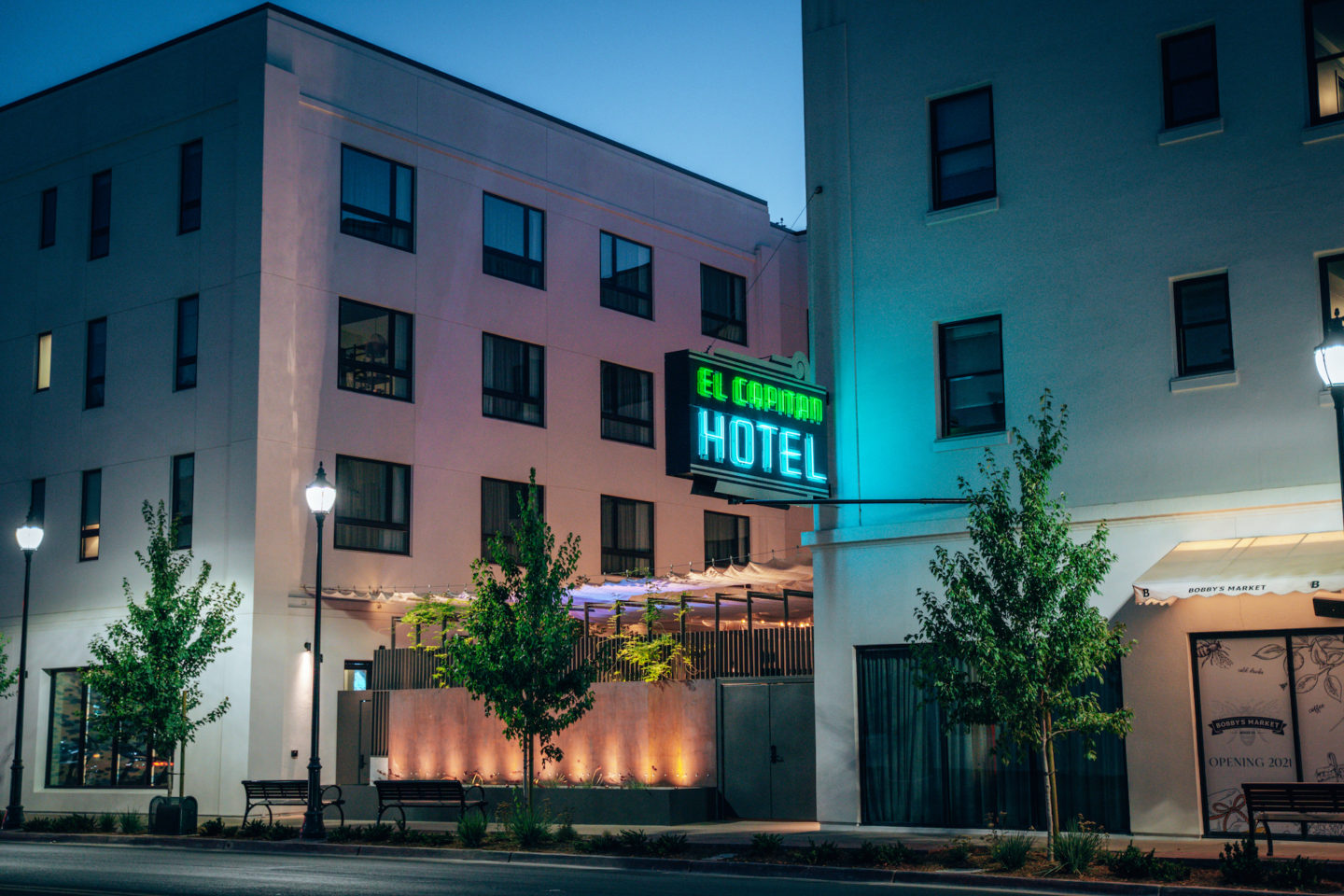
One of our absolute favorite places to stay, is El Capitan Hotel in Merced. It’s a bit further outside of the park, the drive in to Yosemite Village is about 2 hours, but it is well worth it. Especially if you are traveling with a pup! This is BY FAR the most dog-friendly hotel we have ever stayed at. We loved it so much, we’ve stayed here multiple times and will likely stay again.
THINGS TO DO IN YOSEMITE NATIONAL PARK
There is a TON to do in Yosemite National Park. No matter your age, or activity level, there’s something for everyone. The activities we have listed below will cover most of the spectrum, and we hope that there is at something here that you’ll find enjoyable and memorable. We’ve done almost all of them ourselves, and can confidently say they are all memorable!
TUNNEL VIEW
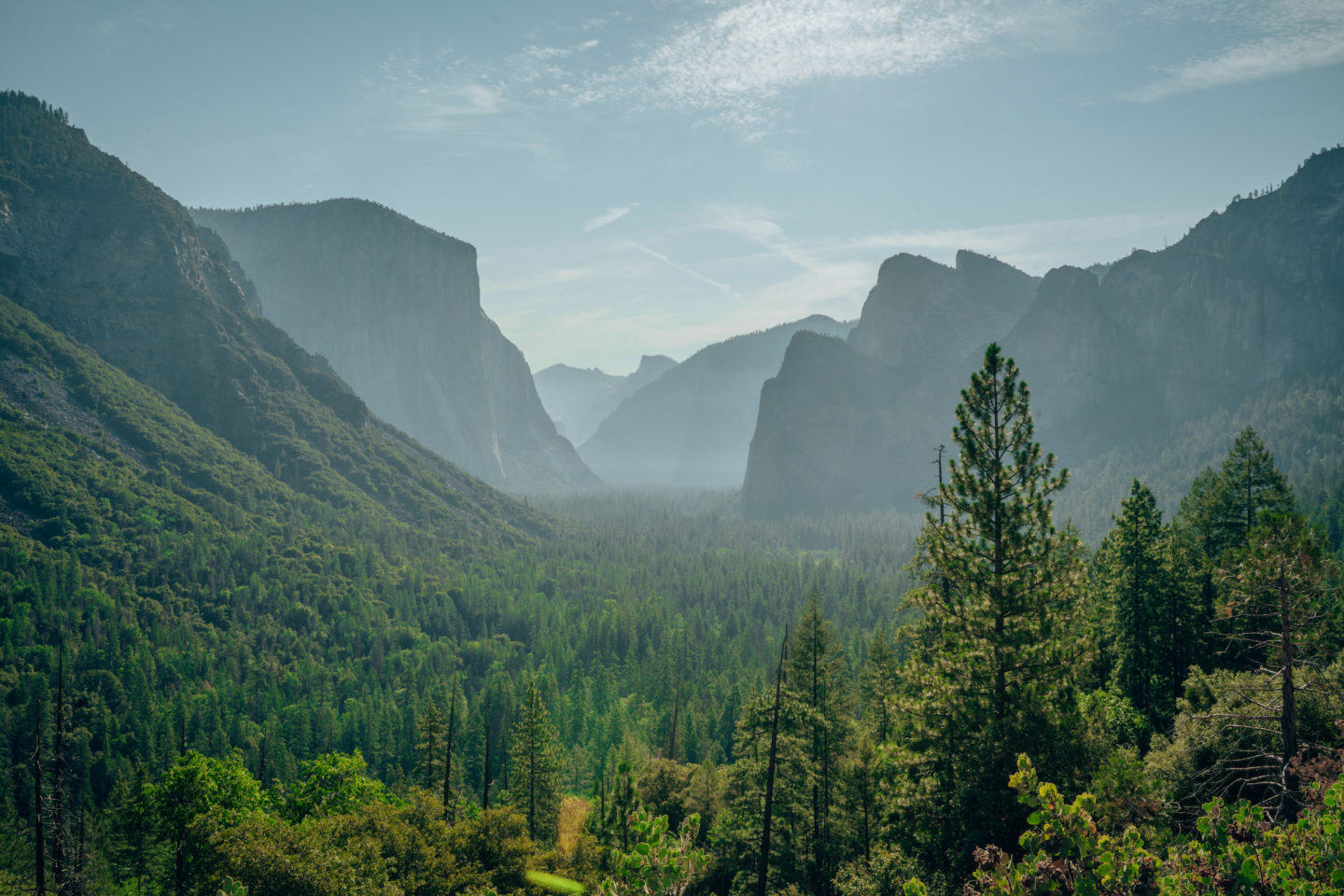
One of the easiest things to do and see in Yosemite, is Tunnel View. This is one of the most iconic and popular spots in the park. And it’s easy to see why. On the left you have El Capitan, and far off in the distance on the right, you have Half Dome. The two most iconic monolith rock formations in the park. This is one of the few places where there is a parking lot right next to the viewing point. Unfortunately, this also means that it can get VERY crowded, VERY quickly. So if you want to not only see this incredible view, but also enjoy it, you’ll want to either visit very early in the morning, or much later in the evening when the crowds have left.
- DIFFICULTY – Easy
- LENGTH – 0.0mi / 0.0km
- PET FRIENDLY – Yes!
BRIDALVEIL FALL
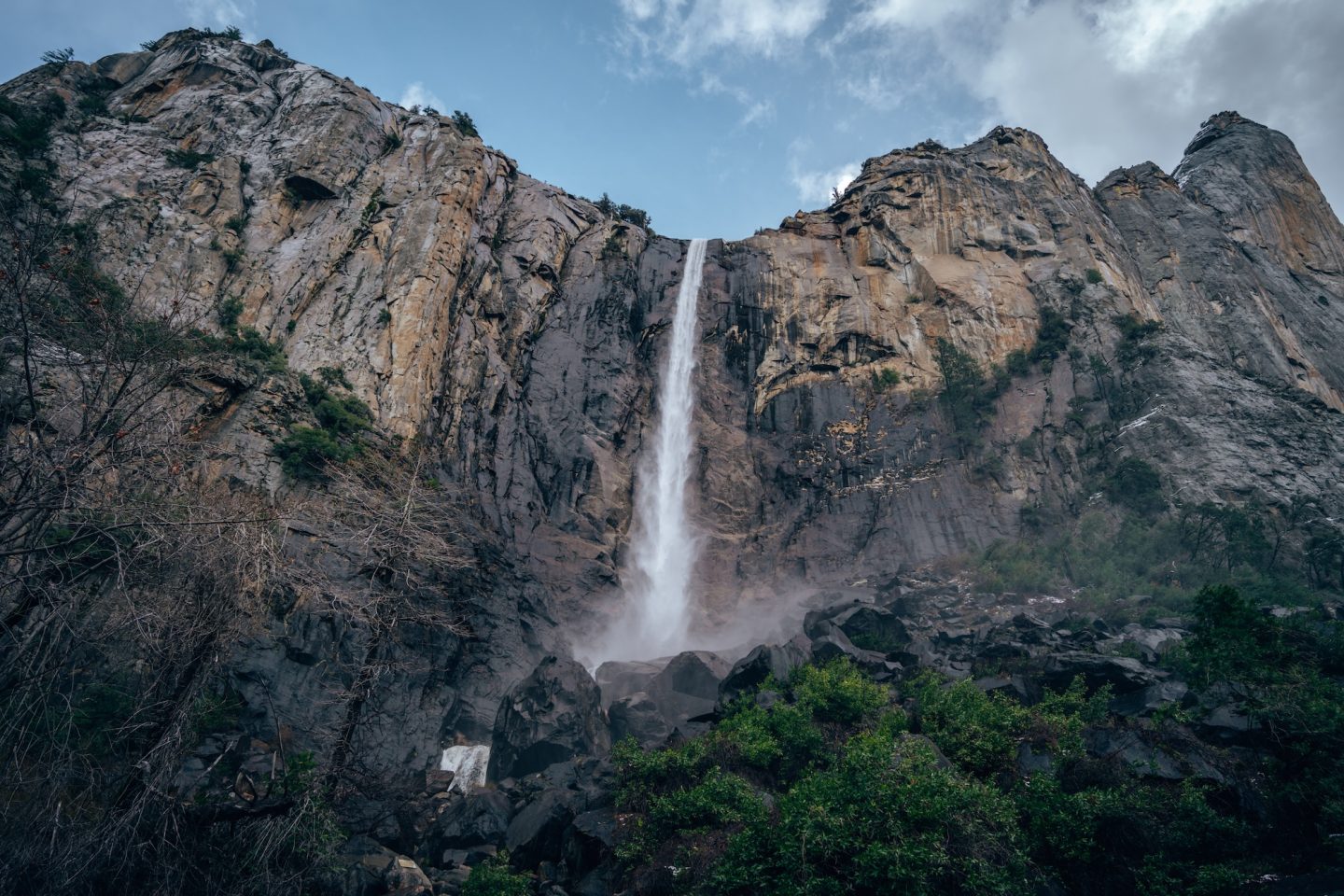
If you’re coming from Tunnel View, Bridalveil Fall will be the next stop as you head towards Yosemite Village. The hike to this beautiful waterfall is relatively short (0.8mi / 1.3km out and back) and easy, making it perfect for any type of adventurer. Much of the hike is paved or at least well maintained. But the view from below is beautiful!
Sadly when we visited, Yosemite was on fire. Which seems to be becoming a yearly norm. We’ll talk more about that below.
- DIFFICULTY – Easy
- LENGTH – 0.8mi / 1.3km
- PET FRIENDLY – No
LOWER YOSEMITE FALLS
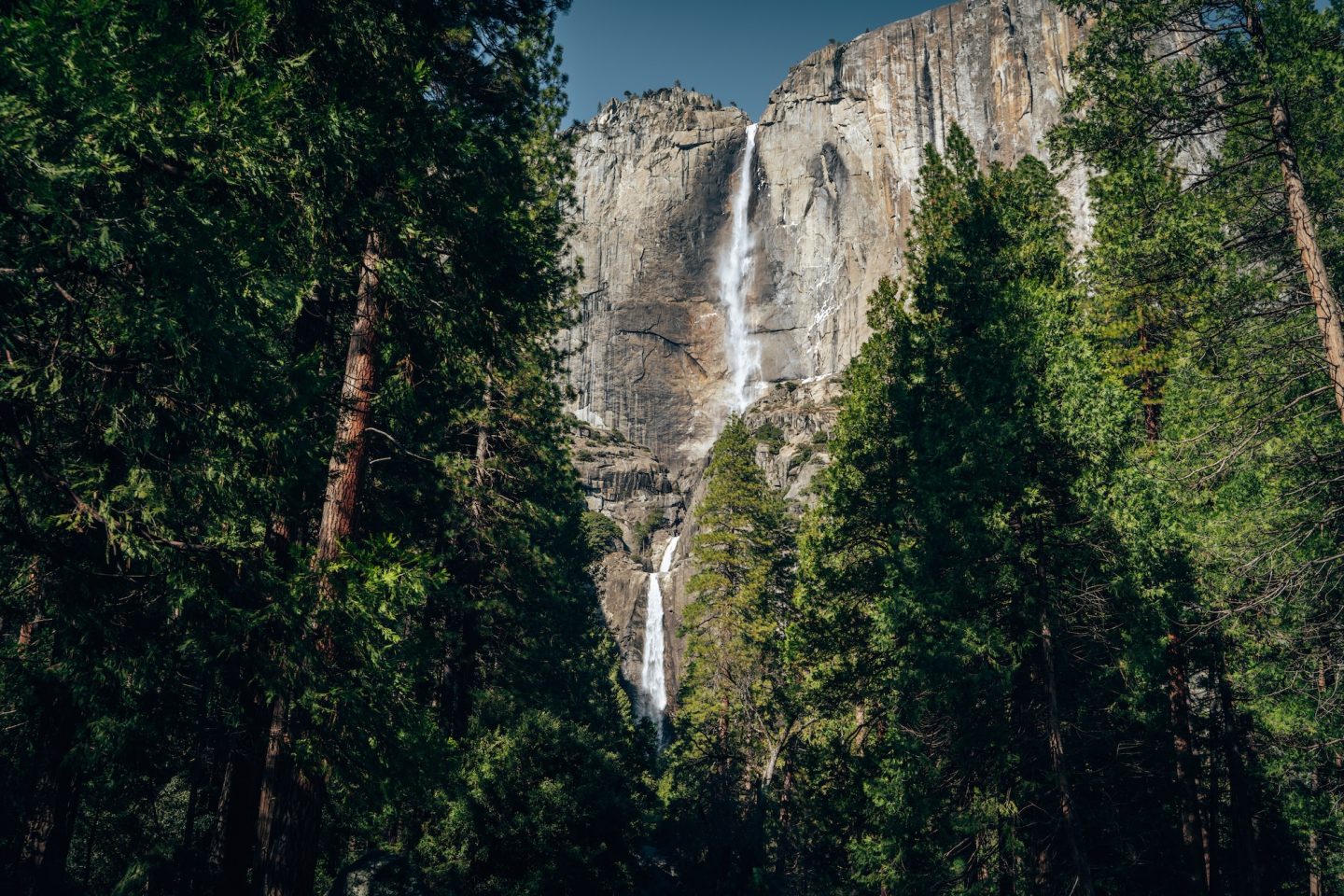
As you continue on to Yosemite Village, it’ll be hard to miss seeing Upper and Lower Yosemite Falls. Facing the north in the park, is one of the best views! Upper Yosemite Falls has a separate trail of its own, but for first time visitors or those trying to keep it on the easier side, we wouldn’t recommend doing Upper Yosemite Falls. Lower Yosemite Falls on the other hand, has a much more reasonable hiking trail. This trail is a 1.2mi / 1.9km looped trail, very flat and well maintained. It is also dog friendly! Depending the time of year you visit, one or both of these falls may be dried up and no longer flowing. So if you want to see them, you’re best bet would be winter or spring.
- DIFFICULTY – Easy
- LENGTH – 1.2mi / 1.9km
- PET FRIENDLY – Yes!
YOSEMITE’S FIREFALL
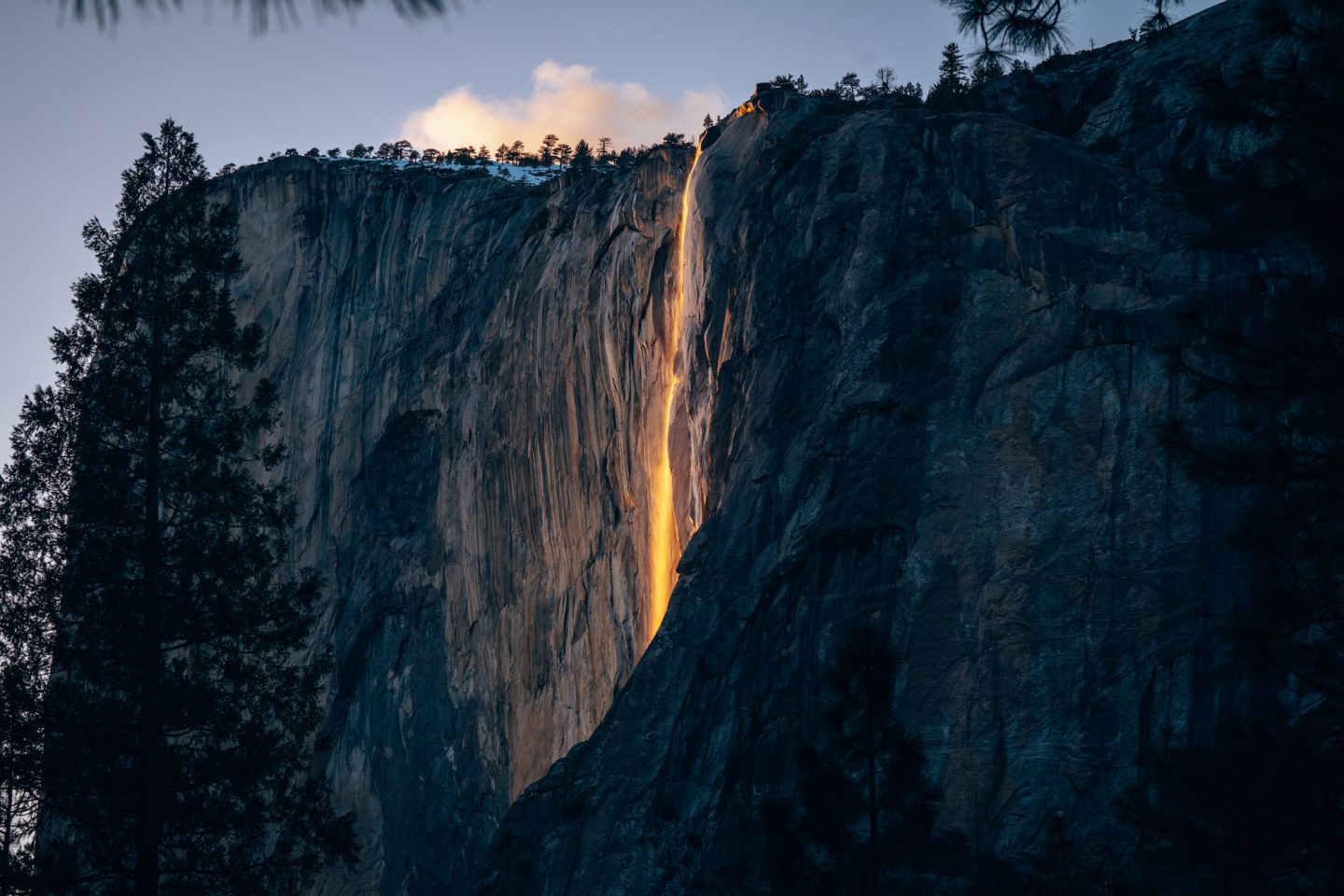
A stunning natural phenomenon that occurs each February, is Yosemite’s Firefall. When conditions align, sunlight illuminates Horsetail Fall, creating a fiery effect. The best viewing spots are along the park’s eastern shore at sunset. Visitors gather for the rare and breathtaking spectacle, which only happens for a few days each year. Make sure to arrive early for a good vantage point, as the event attracts many photographers and onlookers. Firefall is a must-see for anyone visiting Yosemite in winter, offering an unforgettable display of nature’s beauty.
This unique experience requires both reservation and planning. So we’d recommend reading our complete YOSEMITE FIREFALL: WHAT TO KNOW BEFORE YOU GO writeup on how to plan and see this incredible once a year experience!
SENTINAL COOKS MEADOW LOOP
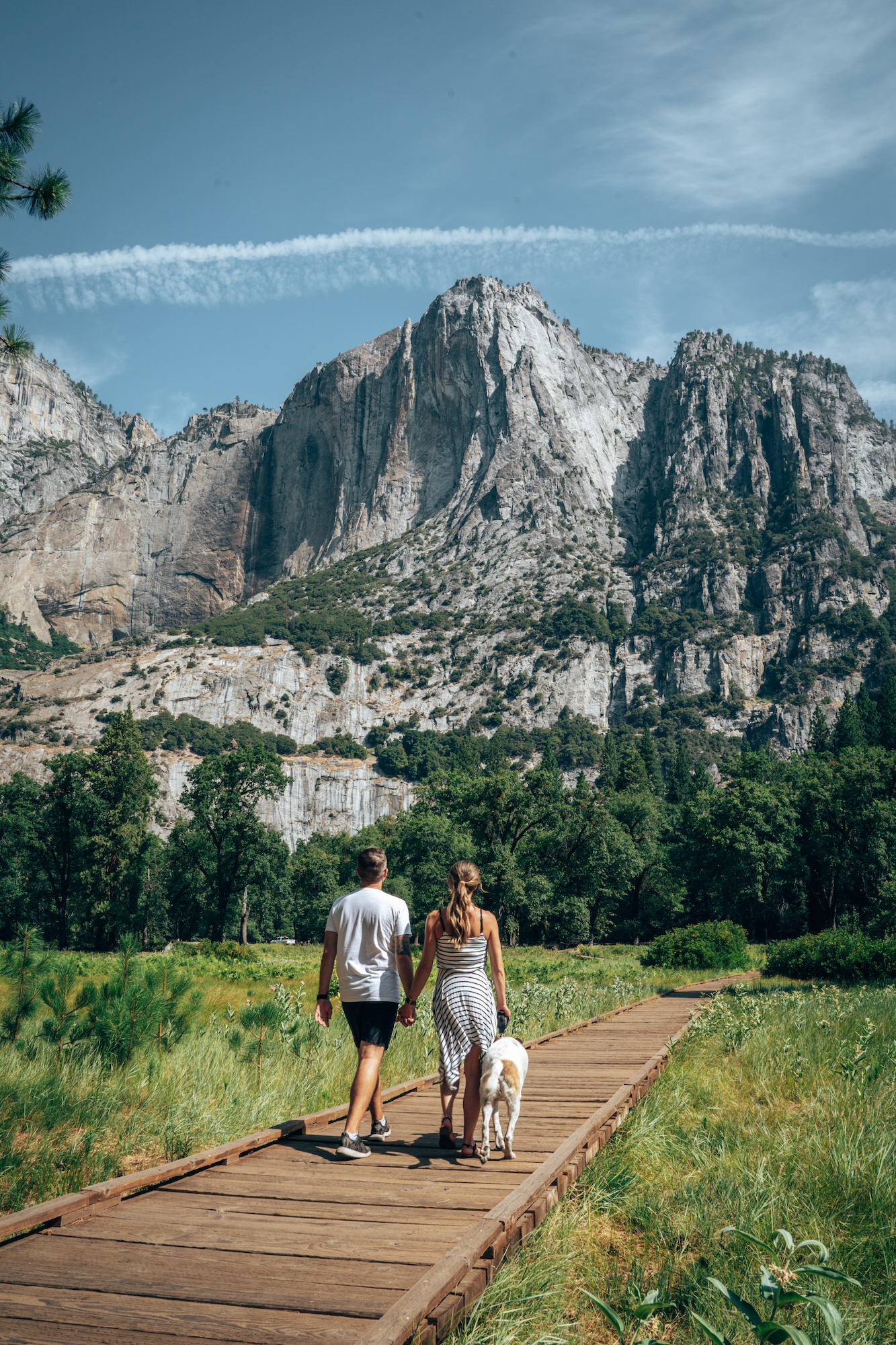
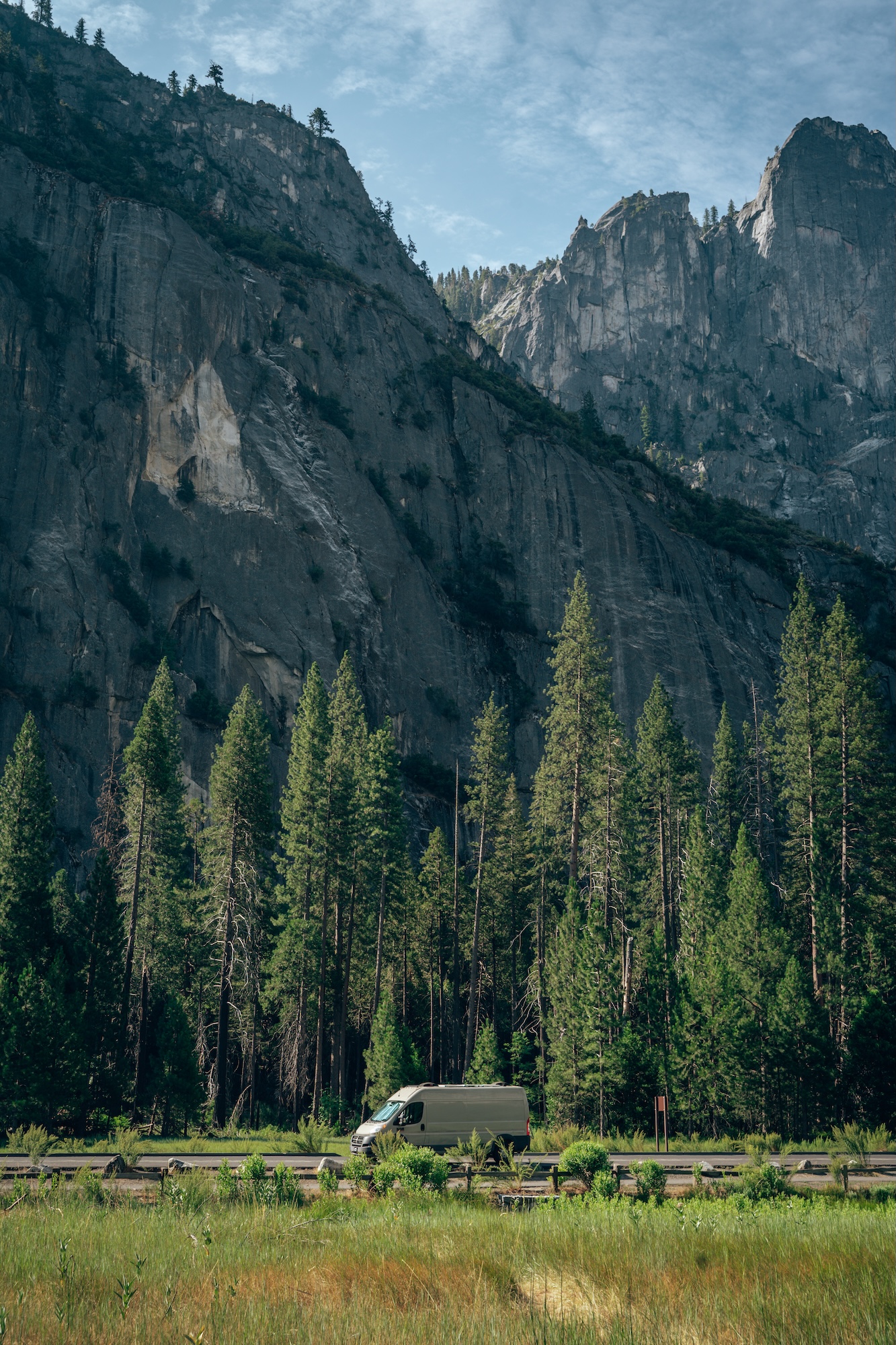
We love Cooks Meadow! This mostly boardwalk trail is in the heart of the valley between Northside Drive and Sentinel Crossover. From here you’ll have views of both Lower and Upper Yosemite Falls, and Sentinel Rock. There is a ton of streetside parking on both streets noted above, but they do fill up by mid-day. So much like everything else in the park, the earlier you visit, the better!
The looped trail is 2.0mi / 3.2km, however you can easily do sections of this individually and do not need to do the entire loop if you do not want to. We preferred staying in the boardwalk section in between the two roads as this provided the best views in the valley. But you’re also very exposed to the sun, so plan accordingly!
- DIFFICULTY – Easy
- LENGTH – 2.0mi / 3.2km
- PET FRIENDLY – Yes!
MIRROR LAKE TRAIL

If you’re looking for a hike with incredible views at the end, Mirror Lake is the trail for you! The hike to this incredible reflection view, has a couple of options: a 2.0mi out and back paved trail which is dog-friendly, making it a perfect soft adventure, or a 4.0mi looped trail which extends beyond the lake. Our recommendation would be to do this hike at sunrise. Seeing the sun hit the peaks of the surrounding cliffs is magical!
- DIFFICULTY – Easy to moderate
- LENGTH – 2.0mi out and back
- TIME NEEDED – 45-60min
- PET FRIENDLY – Yes! (only along the paved portion which leads up to the lake)
VERNAL FALL
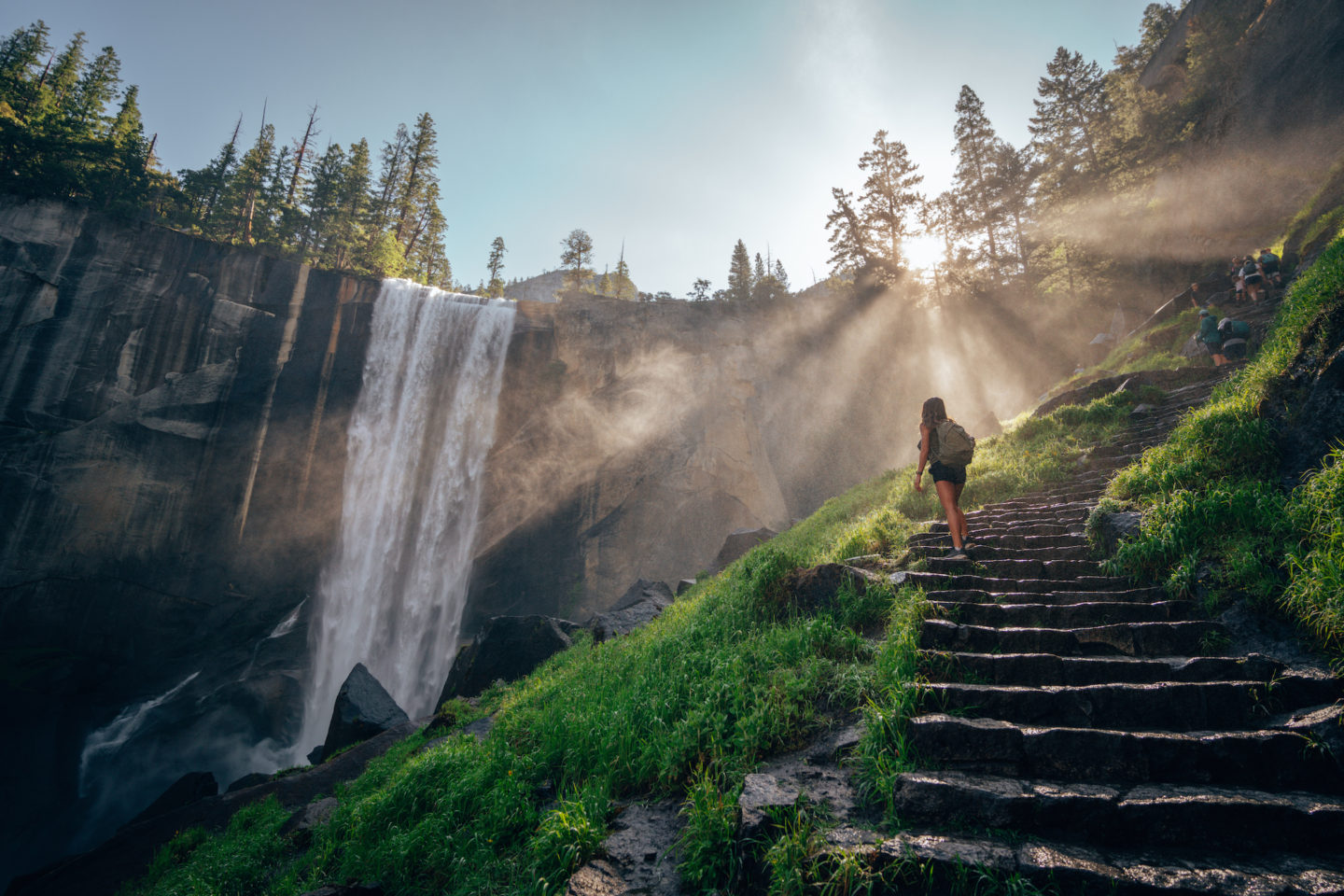
This hike is NOT for the faint of heart. The trail that leads to this waterfall is called the Mist Trail, and for good reason. You will get wet on the way up to this fall. There is an elevation gain of over 1,200ft / 365m, and much of that elevation is going up and down 600+ granite stairs. Much of which are wet and slippery. So if you are up to it, plan ahead, and go early because just like everything else we’ve mentioned thus far, the trail gets VERY busy, very quickly. And the more people on the steps, the more unsafe it gets. We literally saw full families with kids, parents with children on their backs, all hiking up this trail. It was BONKERS. Trust us, go early, and get out early.
The trail is technically a loop, should you get to the top and want more, you can keep going and you’ll eventually get to Nevada Fall. This adds on another 1.5mi / 2.4km to the hike.
- DIFFICULTY – Strenuous
- LENGTH – 4.0mi / 6.4km
- PET FRIENDLY -No
GLACIER POINT IN YOSEMITE
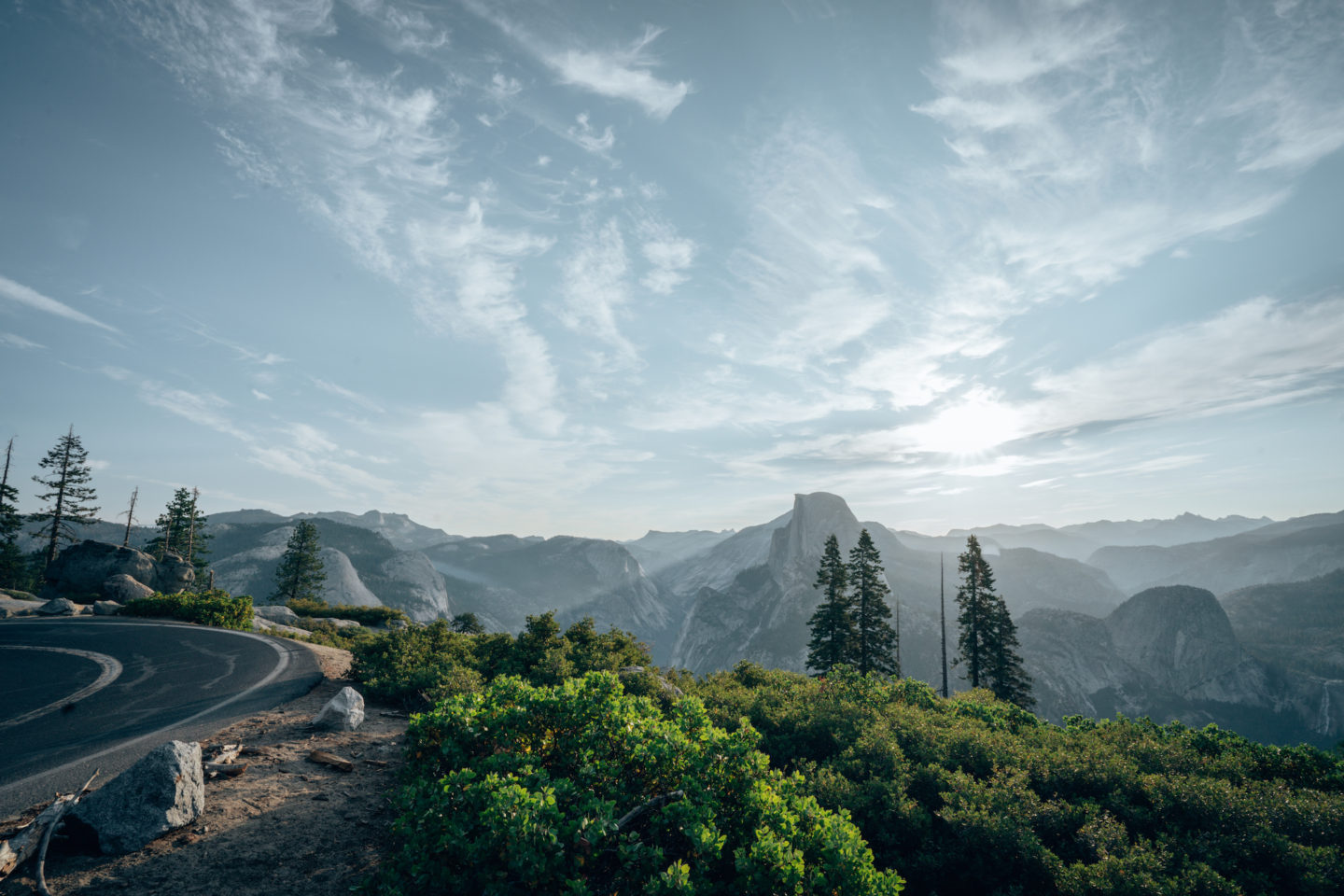
Hands down one of THE BEST VIEWS in the park is Glacier Point. But getting to it requires planning. Located 3,200 feet above Yosemite Valley, it provides panoramic vistas of Half Dome, Yosemite Falls, and the High Sierra peaks. The viewpoint is accessible by car during the summer months, though it’s also a popular destination for hikers.
For a more adventurous experience, visitors can hike up from the valley via the Four-Mile Trail. The hike is a strenuous 9-mile hike, but the reward at the top is worth it. Glacier Point is also a great spot for stargazing, offering an unobstructed view of the night sky. Whether you drive or hike, the view from Glacier Point is an unforgettable highlight of Yosemite.
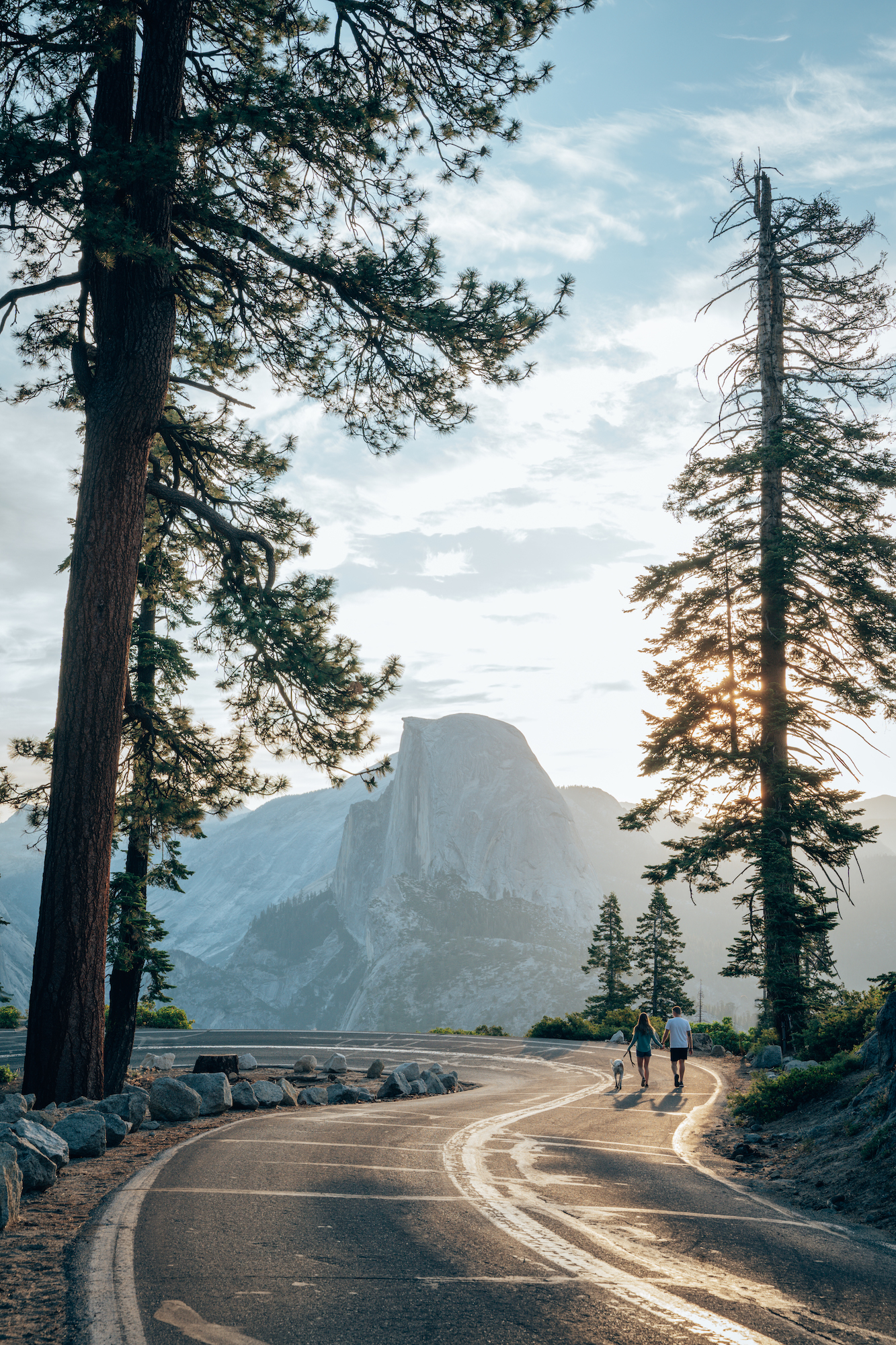
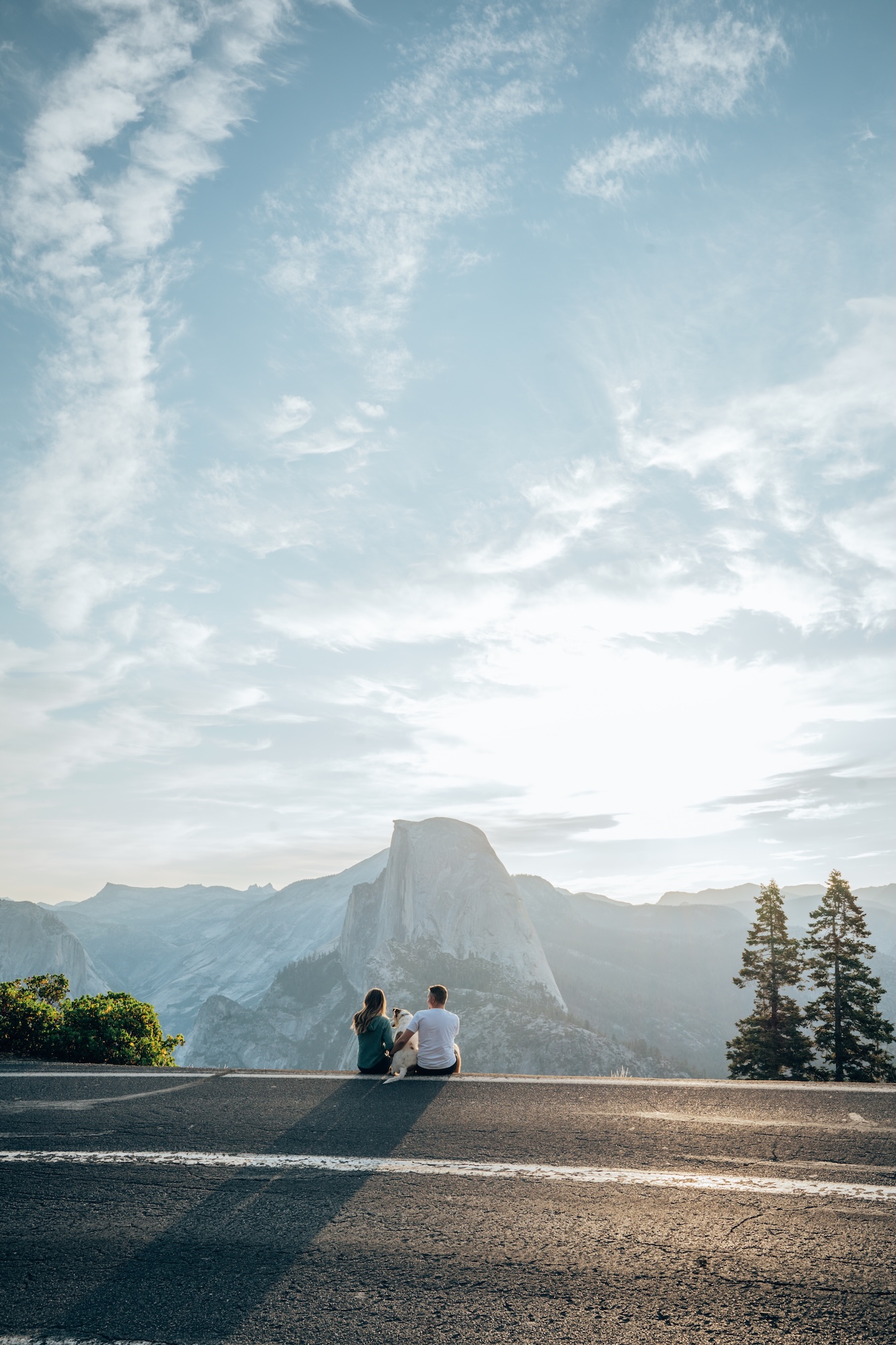
We’d recommend going to this VERY early in the morning for sunrise, or later in the evening for or after sunset. These will be your best options for avoiding the crowds. We went to this spot first thing in the morning for sunrise, and nearly had it to ourselves.
You can check the NPS website up to date status of this road closure.
- DIFFICULTY – Easy (unless you go via The Four Mile Trail, then it is strenuous)
- LENGTH – 0.0mi / 0.0km
- PET FRIENDLY -Yes!
TAFT POINT
Of everything on the list thus far, this is 1 of 2 that we have yet to do. With each visit to the park, we have checked off something new. And this hike along with the next one, are our next items to check off. That being said, we’d be dumb not to include this in the things to do, as it has one of THE MOST EPIC views in the park.
Hiking to Taft Point is a must for breathtaking views of Yosemite Valley and its iconic granite cliffs. The trail is a 2.3-mile round trip, making it accessible for most hikers seeking an unforgettable experience. Starting at Glacier Point Road, the trail meanders through lush forests and serene meadows. Along the way, you’ll encounter diverse landscapes and captivating natural beauty.
The highlight of the hike is Taft Point itself, with its dramatic cliffs and panoramic vistas. Fissures along the cliffs add a thrilling element, offering views straight down into Yosemite Valley. A sturdy railing marks the viewpoint, ensuring safety while you marvel at the surroundings. Time your visit for sunset to witness the valley bathed in golden light.
Based on photos and videos we’ve seen from friends, we’d recommend going at sunrise or sunset to get the best views! We’ll update here once we’ve made our visit to confirm.
- DIFFICULTY – Moderate (unless you go via any of the other options, then it is strenuous)
- LENGTH – 2.3mi / 3.7km
- PET FRIENDLY – No
HALF DOME HIKE
Visiting Half Dome is the second of the 2 activities that we have yet to do, but are very eager to do it! This hike is quite strenuous much like the previous 2, but WELL WORTH it from what we can tell. The hike to Half Dome via the John Muir Trail, is 15.0mi / 24.1km out and back. Part of the trail requires climbing a cliffside via steel cables. Because how intense and strenuous this hike is, a permit is required to do the hike. Should you be feeling adventurous, and want to apply for a permit via a lottery, which you can do so HERE.
- DIFFICULTY – Strenuous
- LENGTH – 15.0mi / 24.1km
- PET FRIENDLY – No
MARIPOSA GROVE
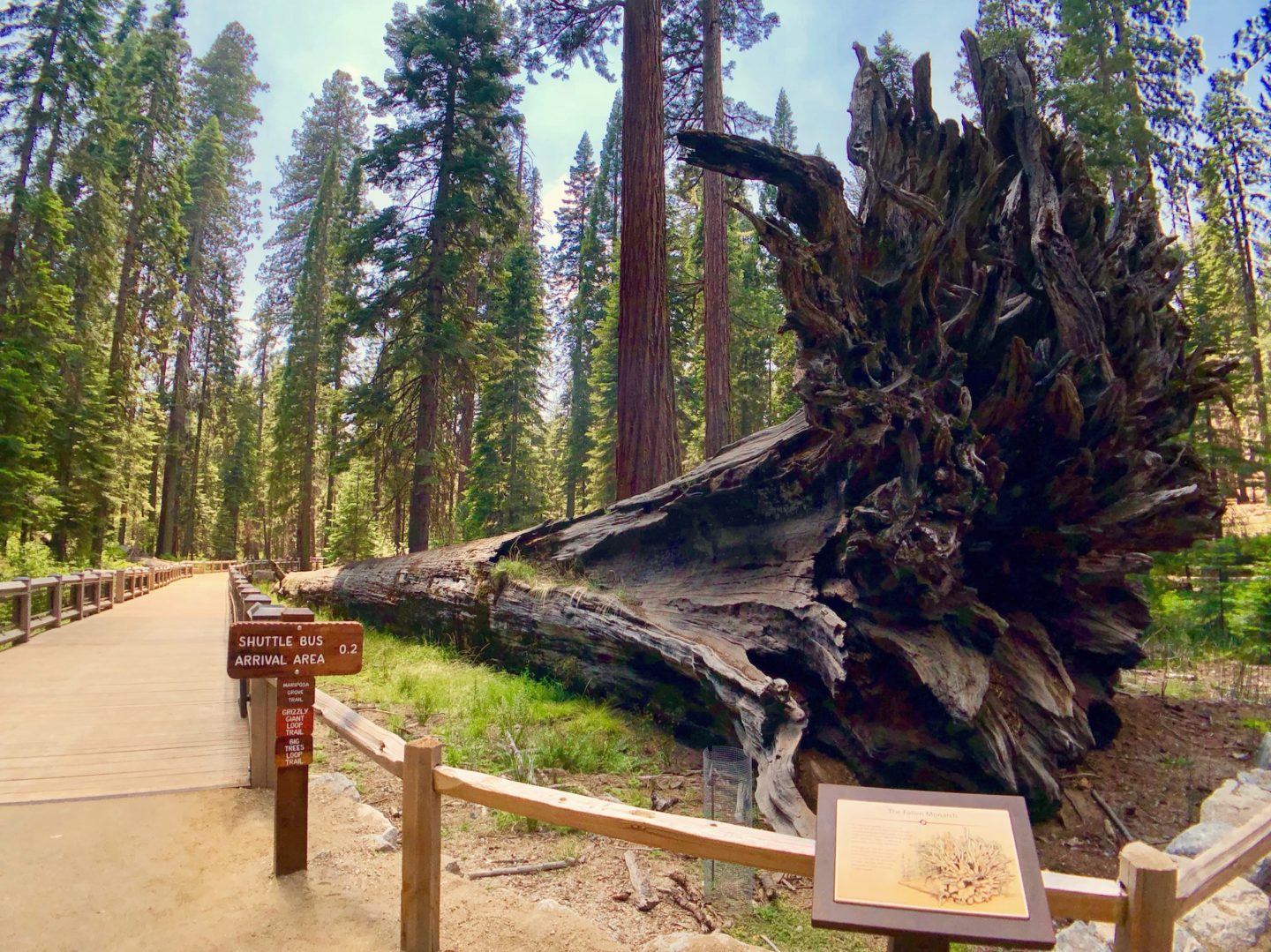
Mariposa Grove, located near Yosemite’s South Entrance, is the park’s largest grove of giant sequoias and a must-see destination for nature lovers. Home to over 500 mature sequoias, the grove showcases these ancient giants in a serene and awe-inspiring setting. The Grizzly Giant Loop Trail, a 2-mile easy-to-moderate hike, highlights some of the grove’s most iconic trees, including the towering Grizzly Giant, estimated to be over 1,800 years old, and the California Tunnel Tree, which visitors can walk through. The trail combines breathtaking views with a sense of history and reverence, offering an unforgettable experience among some of the oldest living organisms on Earth.
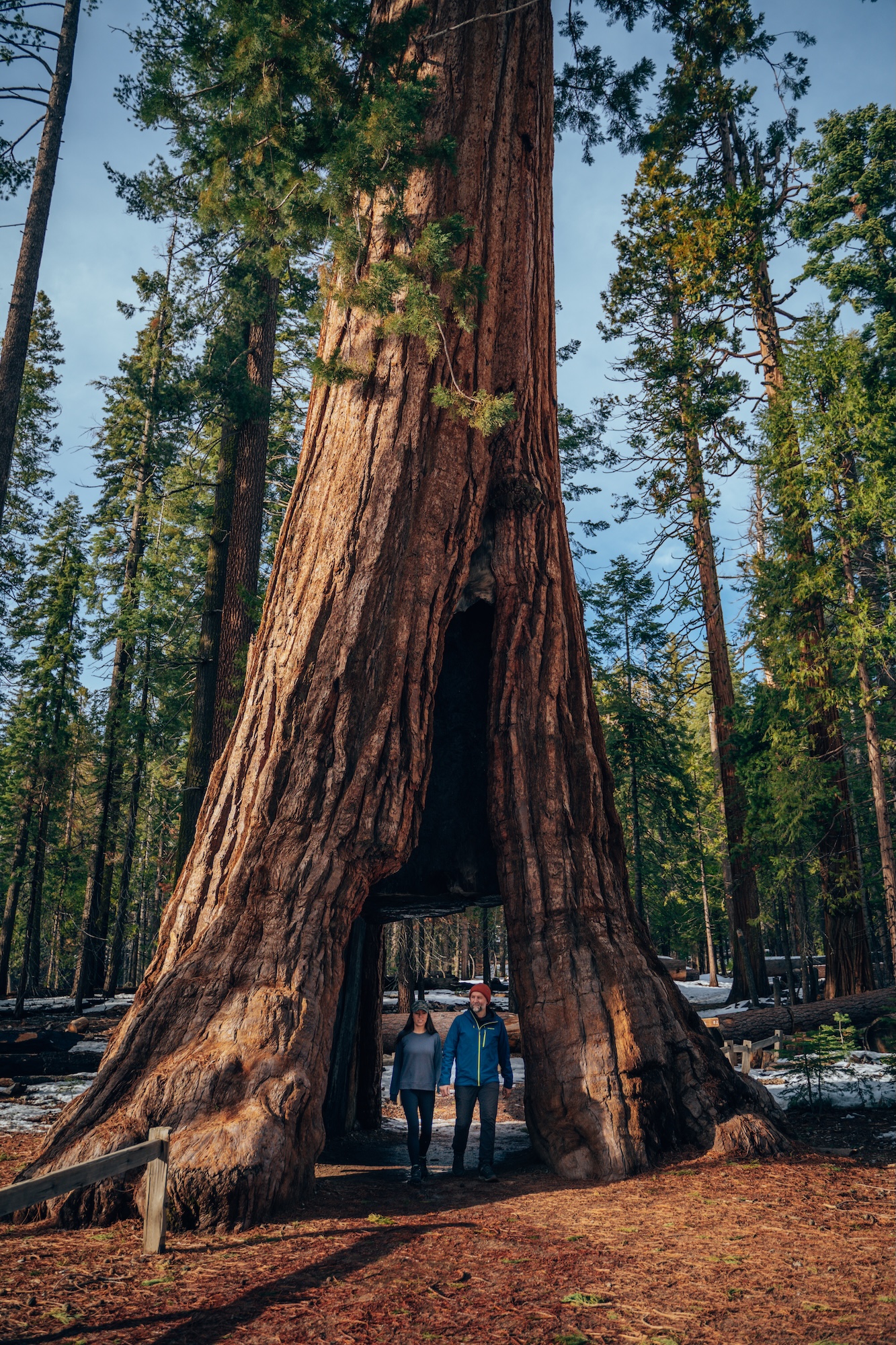
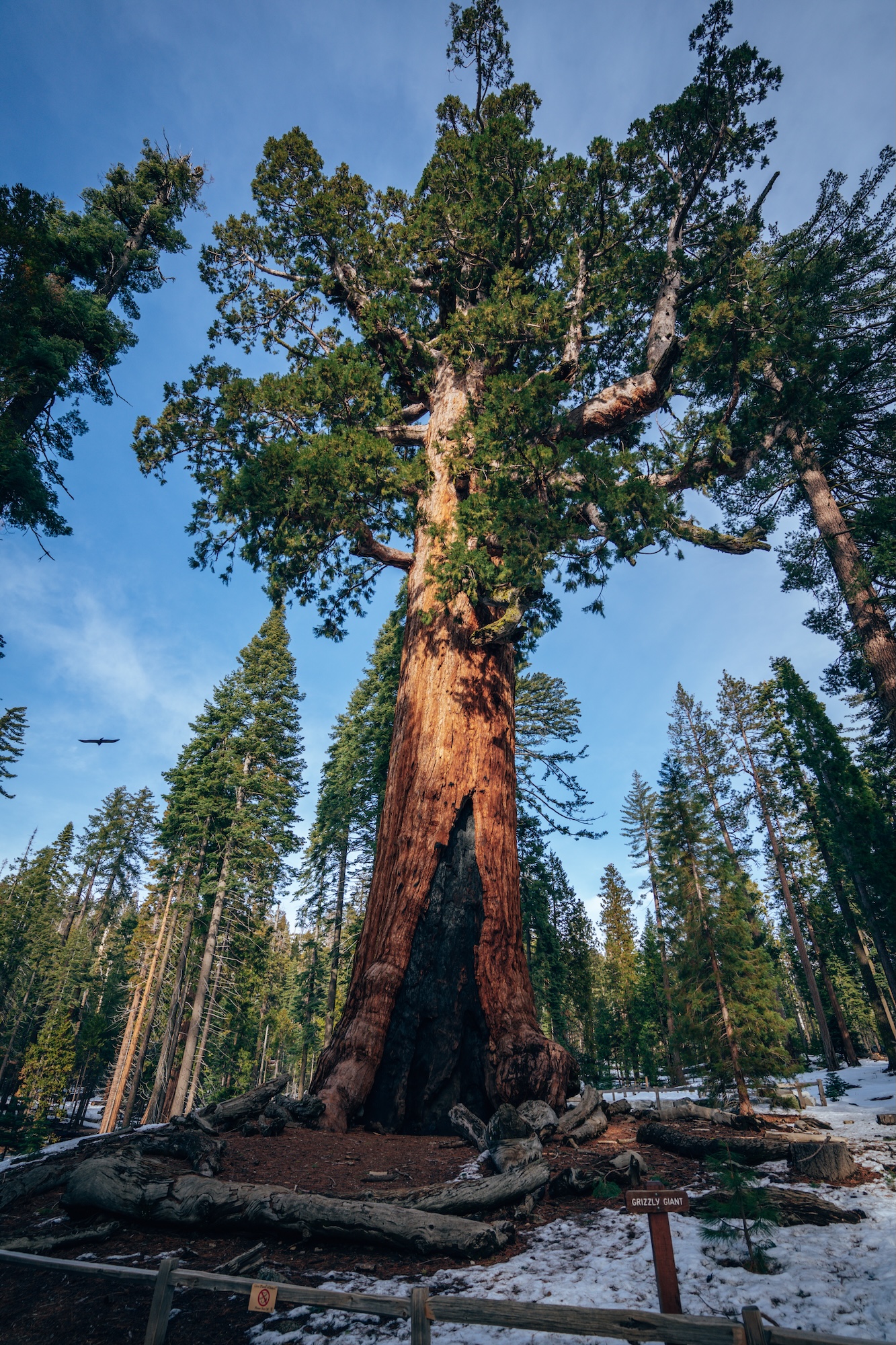
During the winter months, when the shuttle service is not running, there is an additional 3.7mi hike required to connect the Washburn Trail with the Grizzly Giant Loop.
- DIFFICULTY – Easy to Moderate
- LENGTH – 2.0mi / 10km or 5.7mi / 9.2km during the winter
- PET FRIENDLY – No
BEST TIME TO VISIT YOSEMITE NATIONAL PARK
We’ll preface this with the usual disclaimer that this really depends on your personal preferences and interests. However, there are a few things to keep in mind which may sway you one way or the other.
SEASONS
The temperatures in California can range from scorching hot, to very chilly depending on the time of year. And as someone who grew up in the midwest, it took some time to really learn and understand that California has microclimates all over the place. Meaning you could be in one place and it could be 60ºF / 15ºC and drive 30 minutes and it could be 90ºF / 32ºC. Yosemite National Park is no different.
Given that so much of the activities are outdoors, we’d personally recommend going during one of the more milder to warmer months. Peak season is summer, so spring and fall would be ideal. These are also some of the better seasons for viewing waterfalls. We’d also recommend checking the park website for current conditions before visiting.
SPRING
- Avg Low temps: 40ºF / 4ºC
- Avg High temps: 65ºF / 18ºC
SUMMER
- Avg Low temps: 55ºF / 13ºC
- Avg High temps: 85ºF / 29ºC
FALL
- Avg Low temps: 50ºF / 10ºC
- Avg High temps: 80ºF / 27ºC
WINTER
- Avg Low temps: 30ºF / -1ºC
- Avg High temps: 50ºF / 10ºC
HOW MUCH TIME IS NEEDED
How much time you need to plan for in a place, is one of the most important questions to answer when planning a trip. Given the sheer size of Yosemite, we’d venture a guess that unless you live in California or are planning a long trip just to conquer Yosemite National Park, you’re likely not going to be able to do everything on this list. Additionally, how much you do depends on how much you’re willing to do in one day. We prefer to do activities between 6:00am and 11:00am as these are the best hours to avoid crowds. So for us, we would need multiple days to do a lot of this. But if you’re willing to rough the crowds, you could easily do much of this in 1-2 days. If you’re more like us, then we’d recommend 3-5 days.
OTHER THINGS TO CONSIDER
PARKING IN YOSEMITE VILLAGE

One of the main things to keep in mind is vehicle parking. If you aren’t staying inside the park, parking can be sparse. Especially as the day goes on. So when planning your visit, try to concentrate your activities to a certain area, and park somewhere central so you don’t have to constantly move your vehicle. There are buses and shuttles throughout the park, so getting around is not impossible. But wait times can be obnoxious.
FIRES IN CALIFORNIA
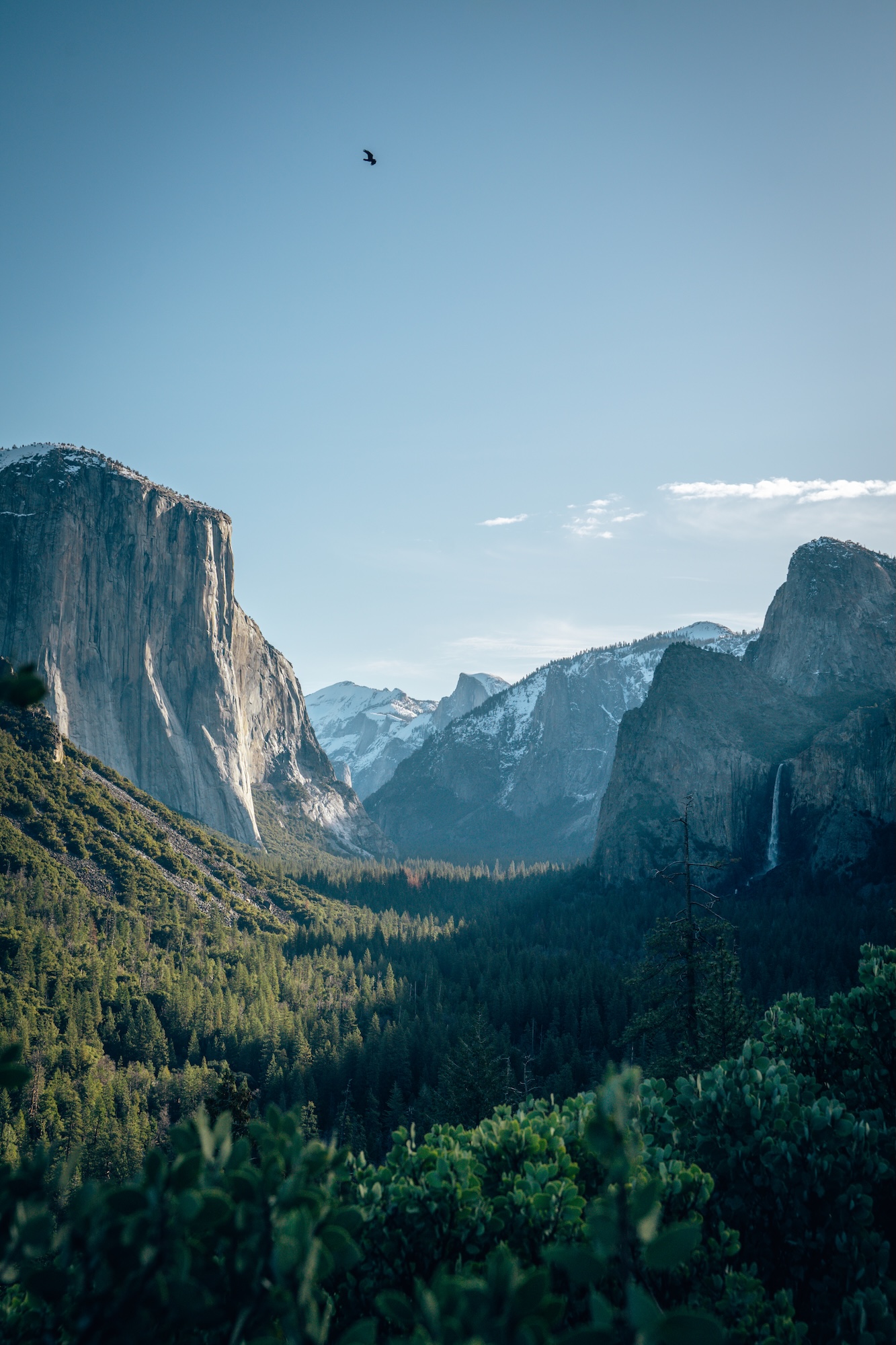

As sad as it is, wildfires are a normal part of California’s seasons. Much like tornadoes in the midwest, and hurricanes in the east. Between the months of June and October, fires are a very real possibility which can impact your visit greatly. These also happen to be primetime peak months as well. So while we would never tell you NOT to visit during these months, we do want to be prepared, and encourage you to plan ahead. Visit the Yosemite NPS Current Conditions page for up to date info on current conditions. You can also check the CalFire page for up to date fire conditions around the state.
ARE DOGS ALLOWED IN YOSEMITE?
Yosemite National Park is actually surprisingly dog-friendly, with specific guidelines to ensure both the safety of pets and the preservation of the park’s natural environment. Dogs are welcome in developed areas such as campgrounds, paved trails, picnic areas, and roads, but they are not allowed on unpaved hiking trails, in wilderness areas, or in public buildings. Popular dog-friendly spots include the paved paths near Yosemite Valley and certain campgrounds where leashed pets can accompany their owners. Dogs must always be on a leash no longer than six feet, and pet owners are required to clean up after them. While the restrictions can limit access to some iconic trails, Yosemite offers plenty of opportunities for pet-friendly adventures and scenic relaxation. See the individual activities listed above for trail specific info, or head to the Yosemite NPS page.
CHAIN REQUIREMENTS IN YOSEMITE
During the winter months, Yosemite National Park often requires tire chains for vehicles due to snow and icy road conditions, even if your car has all-wheel or four-wheel drive. Chain requirements can vary depending on the weather and are categorized into three levels, ranging from carrying chains in your vehicle to mandatory chain installation, regardless of vehicle type. These requirements are enforced on roads like Highway 120, Highway 41, and Glacier Point Road, which are prone to icy conditions. Visitors should check the latest road and weather updates on the National Park Service website or call the park’s road conditions hotline before heading out. It’s also a good idea to practice installing chains beforehand, as conditions can change quickly, and proper preparation ensures a safer, more enjoyable trip to Yosemite.
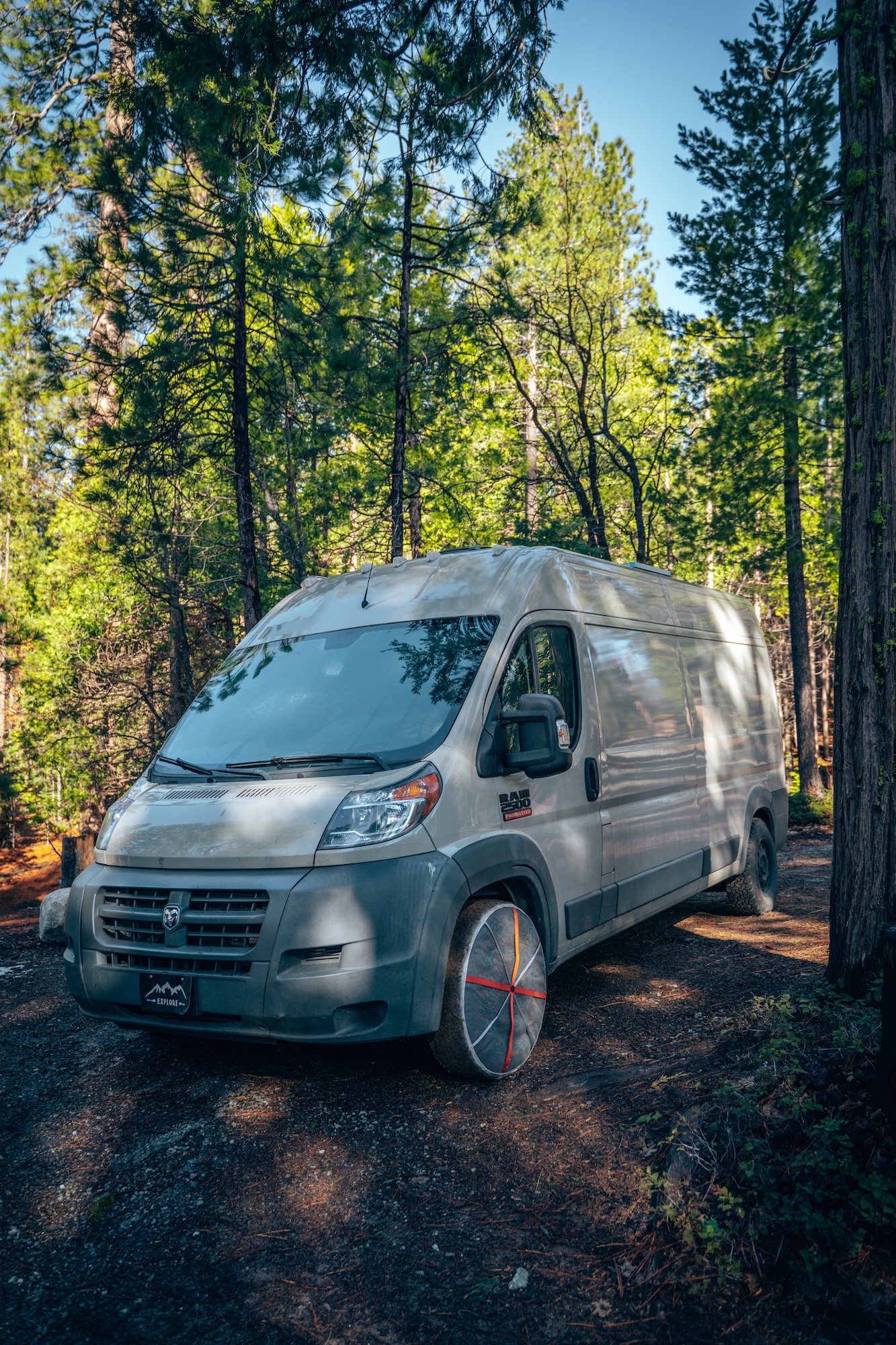
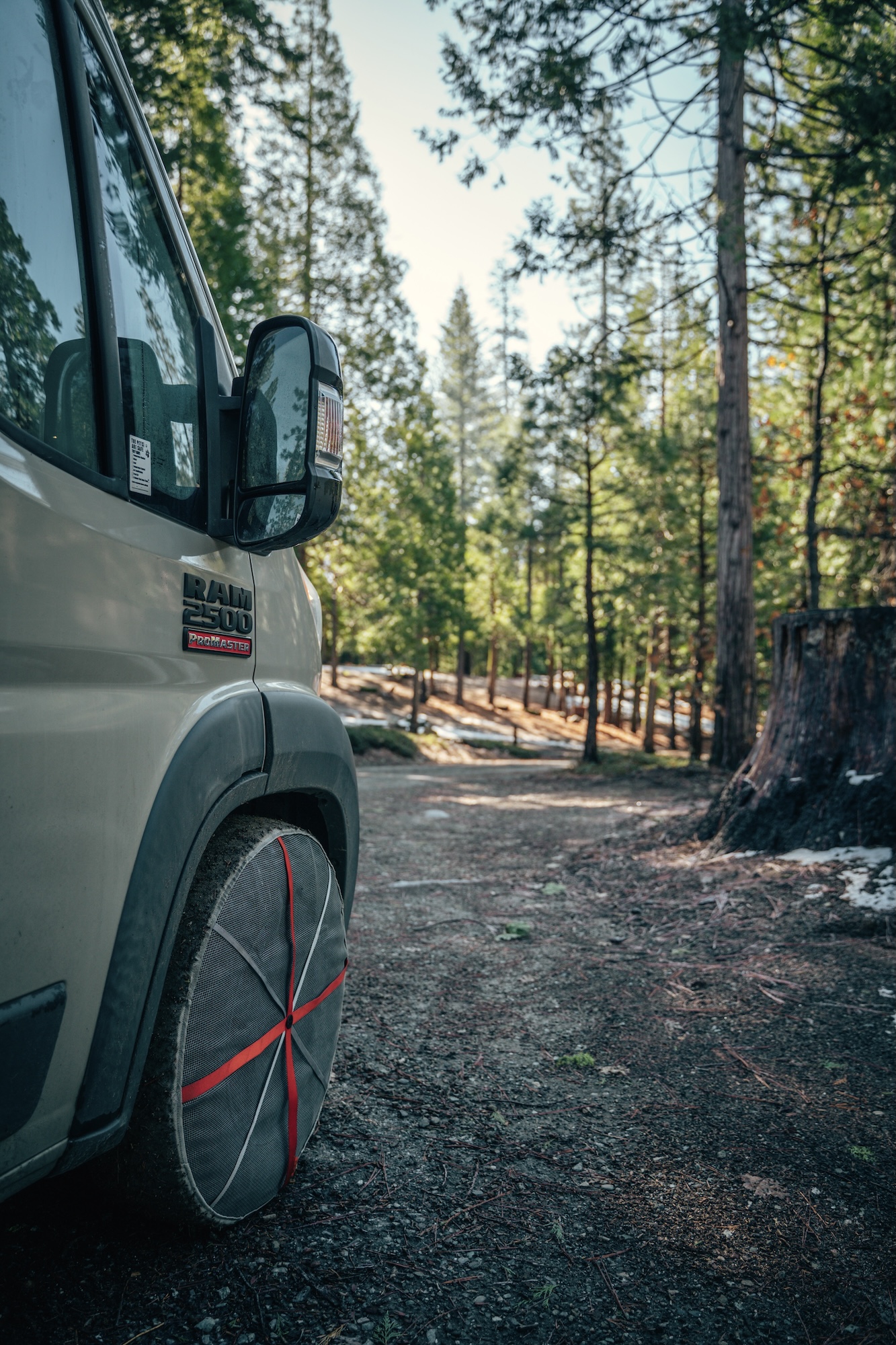
There are often places (gas stations, repair shops etc) outside of Yosemite that will offer chain rentals as well if you don’t own any or don’t want to purchase any. Another alternative, which is what we opted for, is something called Snow Socks. These are lightweight and compact, and super easy to install and take off. They’re also approved to be used in place of chains anywhere that chain requirements are in place.
MAP OF CALIFORNIA
While this article touches on some of the best places to visit in Yosemite, there is still a TON of information about California that we simply could not pack in to a single article. That’s where our epic interactive map of California comes in handy. Within this map and guide, you will find not only all of the locations in this article, but over 500 other points of interest with detailed information about each location, cost, seasonality, dog-friendliness, and much much more!
Not much of a planner? No worries! We also have curated itineraries to make the planning process easier for you. And if that isn’t enough, book a call with us or have us create a custom itinerary for you! We are here to help!
ULTIMATE GUIDE TO YOSEMITE NATIONAL PARK CALIFORNIA
Yosemite National Park is a destination that truly offers something for everyone, whether you’re seeking awe-inspiring landscapes, thrilling outdoor adventures, or serene moments surrounded by nature. From its iconic landmarks like Half Dome and Yosemite Falls to its lesser-known treasures tucked away in the wilderness, the park captivates visitors with its beauty and diversity. With a variety of accommodations, activities, and tips for every type of traveler, planning your visit thoughtfully ensures a memorable experience. Whether you’re visiting for the first time or returning to uncover new wonders, Yosemite’s timeless splendor is sure to leave you inspired and longing to return. And make sure to read our other Yosemite articles!
- YOSEMITE FIREFALL: WHAT TO KNOW BEFORE YOU GO
- 7 SOFT ADVENTURE THINGS TO DO IN YOSEMITE
- BEST U.S. NATIONAL PARKS TO VISIT IN THE WINTER
- HOW TO SPEND ONE DAY IN SEQUOIA NATIONAL PARK
Did we miss anything? Wish we had more info, let us know below in the comments!
If you aren’t following us on Instagram, check us out there as this will be the best place to follow our van life journey and adventure!
Thanks for stopping by!